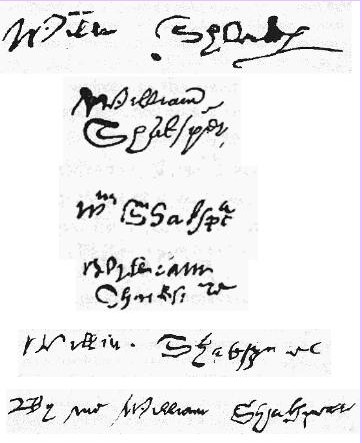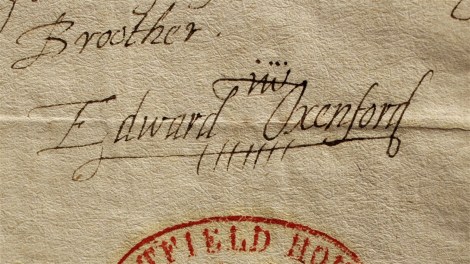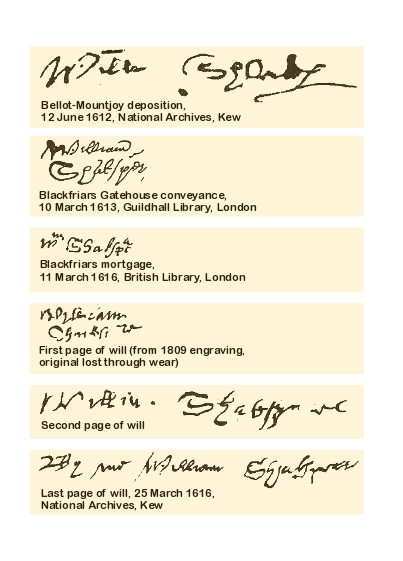One of the more remarkable episodes in Elizabethan history occurred during the time of the French Match, when the Duke of Alencon sent over an “advance man” in early 1579 to woo the Queen before he himself could get there to marry her. The envoy was Alencon’s master of the wardrobe and close friend Jean de Simier, whose smooth tongue and erotic flattery so captivated Elizabeth that her nobles were shocked and flabbergasted as well as extremely jealous. As contemporary historian William Camden put it, the little French aristocrat was “most skilled in love-toys, pleasant conceits, and court dalliances” – transforming the 45-year-old Queen of England into a radiant, gasping, giggling young woman suddenly appearing half her age.
Elizabeth called the dark-skinned representative of Alencon her “monkey” as she basked in his sweet whisperings and refinements of French passion at Richmond Palace. The masterful Simier appeared to be seducing her in front of the entire English court. He and Elizabeth enjoyed intimate suppers and dined together by candlelight when they weren’t jumping in and out of each other’s bedrooms. Could it be that, while paving the way for the Queen’s bridegroom, he had become her lover? (It seems so!)
Alencon himself came over unofficially that August, staying at Greenwich Palace, where Elizabeth swooned over him as well. Calling him her “frog,” she treated him with a great show of affection – despite his being more than twenty years younger, not to mention the disfigurations of his face and body from childhood smallpox, which also had stunted his growth before he could reach five feet.
Imagine that during this time you happened to be the chief comedy-writer and stage producer for the rarefied audience of the Elizabethan royal court! How could you resist putting on some satirical skits to set the palace on a roar? (Today such skits might resemble the parodies on Saturday Night Live.) Oh, my, what fertile ground for a young playwright such as Edward de Vere, Earl of Oxford – who apparently had Elizabeth’s approval, and even encouragement, to have uproarious fun with it!
On 26 December 1579, a play called A History of the Duke of Milan and the Marquis of Mantua was presented at Whitehall Palace by the actors of the Earl of Sussex, Lord Chamberlain, who was Oxford’s great friend and supporter. Eva Turner Clark suggested in 1930 that this court comedy was one of the earliest versions of The Two Gentlemen of Verona – which, more clearly than most plays attributed to Shakespeare, appears to reveal the various stages of its development.
Edward de Vere spent much time in Italy during 1575-76, sojourning in Verona and Venice. He had ample opportunity to attend Italian plays and the street theater of Commedia dell’arte – influences in Two Gentlemen with which William of Stratford could not have been familiar. The settings of the play are Verona, Milan and the frontiers of Mantua – which Clark saw as representing Paris, London and Flanders.
(Oxford returned home from the Continent in April 1576 after fifteen months, cutting short his stay because of scandalous gossip at Court that his wife Anne Cecil had committed adultery and had given birth to another man’s child. In the play, Valentine apparently alludes to this personal episode by saying he had been traveling “some sixteen months, and longer might have stayed if crooked fortune had not thwarted me.” – 4.1.21)
It seems that the early version of 1579 was more topical and much shorter than the later one, which was mentioned by Francis Meres in 1598 but withheld from publishers until it appeared in the First Folio of 1623 under the title The Two Gentlemen of Verona. The early version for the court presented characters loosely based on participants in the Anglo-French marriage: Elizabeth became Silvia, the beautiful daughter of the Duke of Milan; Alencon became Valentine, the gentleman of Verona who travels to the court at Milan and falls in love with Silvia; and Simier became Proteus, the other gentleman of Verona, who sues for Silvia’s affections himself.
Within Two Gentlemen the many allusions to the proposed Alencon match (as it stood circa 1579) include a reference to Alencon’s escape from the Louvre window by means of a rope-ladder, which he did on Valentine’s Day the year before. Oxford may have used the name itself, Valentine, for Alencon because of that escape; and Valentine appears to refer to the episode when he speaks of himself and Silvia: “Ay, we are betrothed: nay, more, our marriage-hour, with all the cunning manner of our flight, determined of: how I must climb her window, the ladder made of cords; and all the means plotted and ‘greed on for my happiness.”
Another allusion is the use of the French word “mal-content” in reference to opponents of Catherine de Medici called the Malcontents, of whom Alencon was the figurehead. When Valentine asks Speed how he can tell that he, Valentine, is in love, Speed replies: “Marry, by these special marks: first you have learned, like Sir Proteus, to wreathe your arms like a malecontent; to relish a love-song…”
Oxford apparently kept updating the early topical play as the French Match proceeded to its conclusion in early 1582, when Alencon finally left England for good. In the previous December, the French prince was still stubbornly refusing to leave and actually threatened the Queen, telling her: “If I cannot get you for my wife by fair means and affection, I must do so by force, for I will not leave this country without you!”
It’s Proteus who gets to mirror that statement, in the final scene of the play:
PROTEUS: Nay, if the gentle spirit of moving words can no way change you to a milder form, I’ll woo you like a soldier, at arms’ end, and love you ‘gainst the nature of love,–force ye.
SILVIA: O heaven!
PROTEUS: I’ll force thee yield to my desire!
(The praise of Silvia in Two Gentlemen reflects the worshipful flattery lavished upon Elizabeth as when Valentine says of Silvia: “Yet let her be a principality, sovereign to all the creatures on the earth!”)
When the play was revised yet again, much later, its new title The Two Gentlemen of Verona was perhaps an inside joke indicating “The Two Sides of One Ver” – (1) Valentine, the idealistic side of Oxford, the courtier setting forth to travel; and (2) Proteus, the creative side of Oxford, as artist who views the world more darkly.
But that aspect goes beyond the topic at hand … that the presence of Alencon and Simier in an earlier, shorter, more topical version of Two Gentlemen is yet another reason to conclude that Oxford wrote the works attributed to Shakespeare — as opposed to William of Stratford, who, in 1579, was still only fifteen years old.
Postscript: The reigning Stratfordian scholars apparently need to keep denying that the French match is treated in the Shakespeare plays; or, more accurately, they need to keep ignoring it altogether. But once someone sees the evidence of it in Two Gentlemen, as well as in several other plays, notably A Midsummer Night’s Dream, there’s a moment of clarity — an “aha!” moment — or, well, I’d say there should be!














